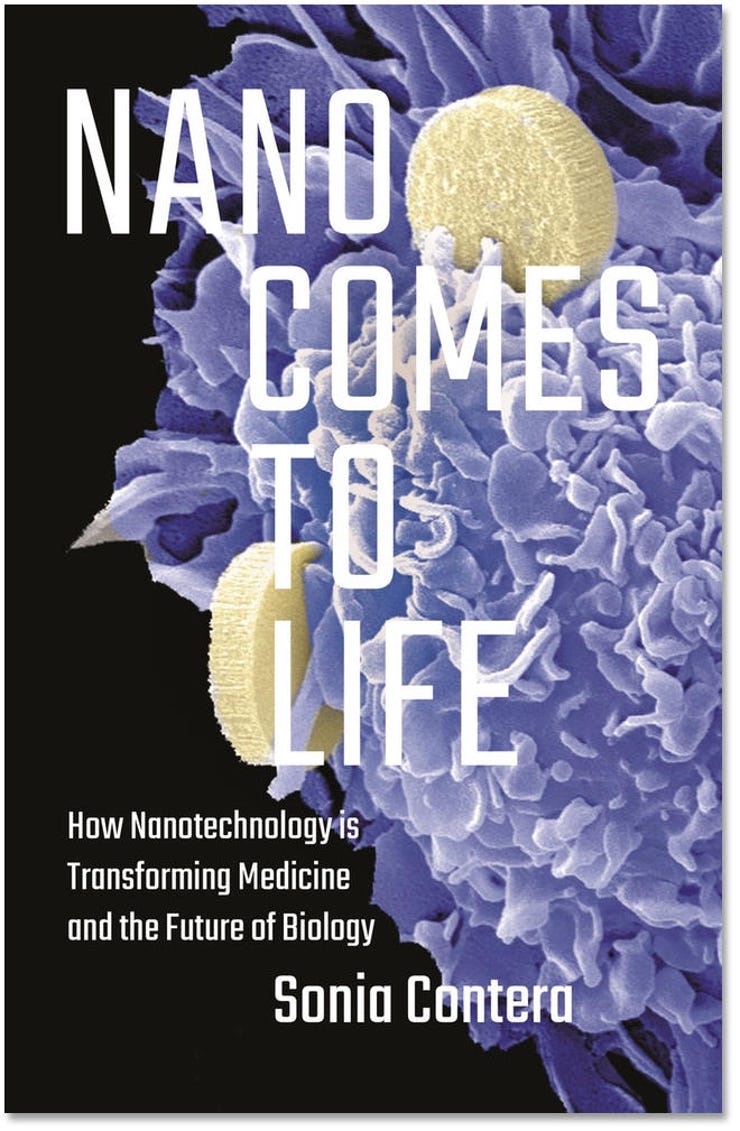Nano Comes to Life, book review: Small steps towards a giant leap


Nano Comes to Life: How Nanotechnology Is Transforming Medicine and the Future of Biology • By Sonia Contera • Princeton University Press • 216 pages • ISBN: 978-0-691-16880-7 • $24.95 / £22
I had almost forgotten about nanotechnology; after a flurry of coverage and discussion circa 2007-2008, it seemed to have returned to the realm of 'crackpot ideas' that might bear fruit 'someday'. This was especially true because some of the people who were most eagerly interested in nanotechnology at that time were cryonicists who, as one of the organisers of the 2007 conference on responsible nanotechnology put it, "saw it as a way of curing their whole-body frostbite".
So for a while, researchers eager to avoid stigma worked on 'molecular manufacturing' rather than 'nanotechnology'. This, even though the original idea of being able to directly manipulate atoms came from a 1959 lecture by Richard Feynman, who went on to win the 1965 Nobel Prize in Physics.
No one is proposing that nanotechnology can revive cryonically preserved humans. Nonetheless, behind the scenes nanotechnology has remained of interest to biologists and medical researchers, as Sonia Contera, a biological physicist at Oxford, explains in Nano Comes to Life. What appears new to us -- the involvement of physicists in biology -- actually is not. Physicists, she told a recent meeting of the London Futurists, "have always been involved in biology and medicine".
SEE: Sensor'd enterprise: IoT, ML, and big data (ZDNet special report) | Download the report as a PDF (TechRepublic)
"One reason I wrote this book is that most books about nanotechnology are not written by women, or scientists, or working-class women from Spain…" Contera told the Futurists.
In Nano Comes to Life, Contera provides a history of how we think about organisms, followed by an outline of current work and nanotechnology's real promise. For much of the last century or two, organisms were seen as machines, as scientists identified the parts of cells and developed some understanding of how biological and chemical processes worked. We kept thinking that this approach was bringing us close to understanding the mystery of life itself -- first when Watson, Crick, and Franklin established the structure of DNA, and then again when, in the 1980s, the Human Genome Project decoded it gene by gene.
A new era?
By now, we were supposed to be in a new era of personalised medicine and cures for intractable diseases. Instead, Contera writes, the reductionist view of biology leaves the real mysteries unsolved. Mapping the genome wasn't enough. Then we thought genomics and proteomics would bring solutions. Now, those aren't enough, and a new thought is occurring: maybe life isn't a purely biochemical set of processes -- "an algorithm written in genes". Even big data and mathematical models don't help: they often, Contera writes, "do not take into account the physical reality of the cell". In general, this approach ignores emergence -- the idea that "in life 'the whole is more than the sum of the parts'."
The future laid out by Contera is one of multidisciplinary collaboration that, this time, might finally deliver the long-held dream of much better cures and more personalised medicine. This would be based on mechanistic models at all three biological scales -- nano (DNA and proteins), micro (cells and bacteria), and macro (tissues and organs) -- and their interactions. Reading this book is one of those moments when, you think, for purely self-interested reasons, "I hope I live long enough to see this."
RECENT AND RELATED CONTENT
Elon Musk's mind-reading technology could be about to take a big leap forward
How brand new science will manage the fourth industrial revolution
Microrobots delivered cancer cells to live animals
ANU researchers build 'brain-on-a-chip' for future brain prosthetics
This nanotechnology microsensor is so sensitive it can detect beat of insect wings
Read more book reviews
- Defending democracy in a post-truth world filled with AI, VR and deepfakes
- Holiday reading roundup: Five books to inform, educate and entertain
- Ghost Work and Behind the Screen, book reviews: Lifting the veil on the internet's secret employment sector
- Fire, Ice and Physics, book review: The facts behind the fantasy
- You Look Like a Thing and I Love You, book review: The weird side of AI